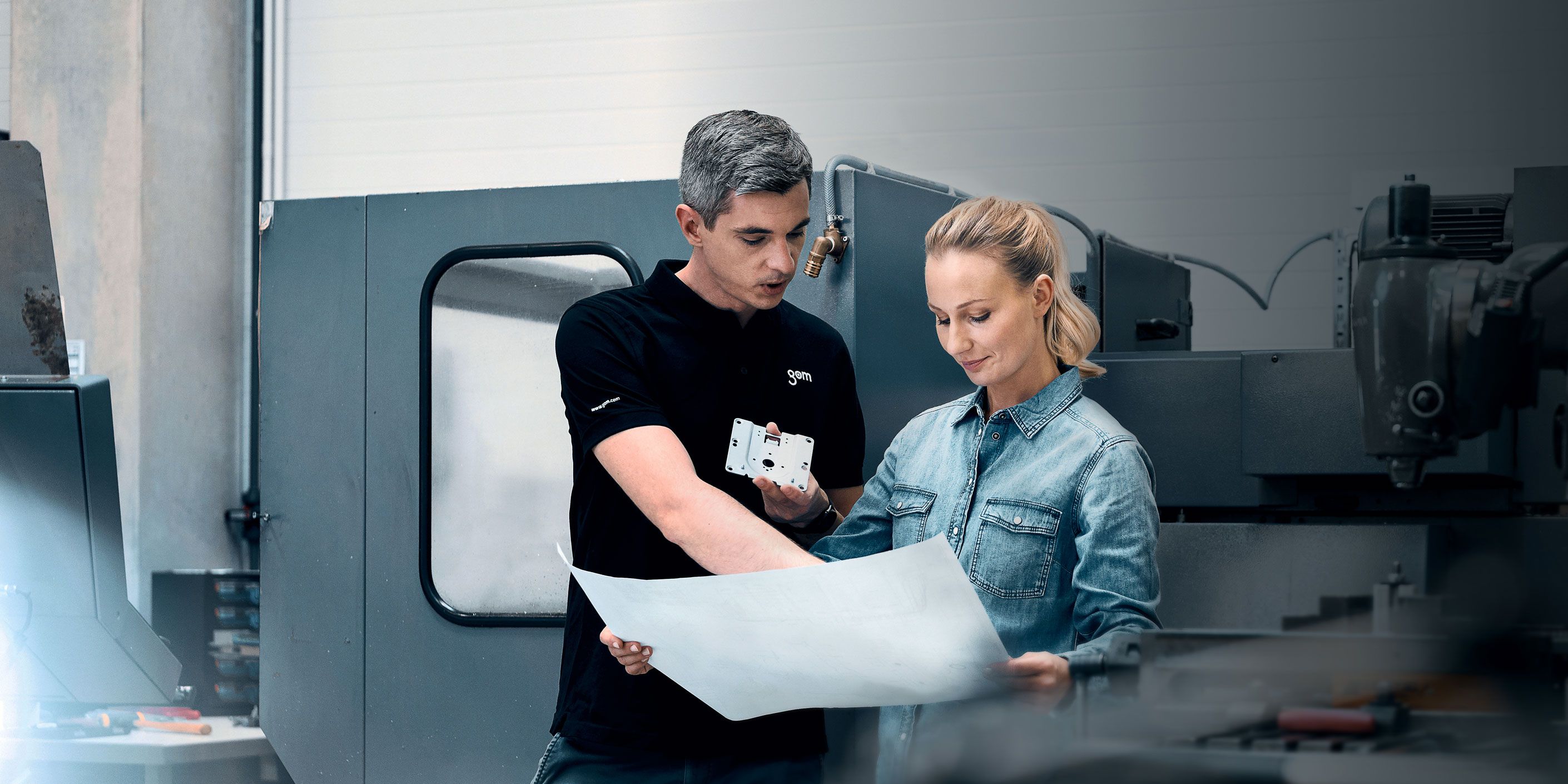Process optimization
Smart toolmaking
In the metal industry, optical 3D measuring systems are accelerating the entire tool life cycle from manufacturing to maintenance. ATOS sensors can capture tools, parts, or both. The software then creates a model, or digital twin, that can be used as the basis for a large number of applications.

Manufacturing
A cast blank is due to be milled to make a tool. The measuring system starts by digitizing the cast blank and aligning it with the CAD model. The excess dimensions can then be simply entered into the milling machine. This reduces CNC machine running times by up to 50% and minimizes tool breakage.

Try-Out
Once a tool has been produced, tests have to be carried out to check whether the test parts match the design. To do this, the measurement engineer scans the part in the press shop itself. Using the full-field measuring data, the GOM Inspect software identifies deviations between this digital twin and the CAD data. Problem areas are visible immediately and the tool can be modified accordingly.

Archiving
In order to be able to produce parts with the correct geometry, tools are often reworked in an iterative process during the try-out phase. However, following these manual modifications, the tool no longer corresponds to the CAD model. The CAD model needs to be updated for archiving purposes. To do this, a full-field scan of the corrected tool is produced. The CAD data can then be updated easily using reverse engineering.

Copy milling
With tools of certain shapes, it is possible to mill a new tool without reverse engineering in the CAD system – using 3D measuring data. This can be useful, for instance, when replacing broken tools. In addition, the data can also be used as a basis for uncomplicated milling of mirrored tools.

Wear measurement
Tool wear leads to scrap in component production. This situation can be prevented by scanning the tool’s active surfaces at regular intervals. Comparing this measuring data with the CAD data set shows the current state of wear and helps when planning maintenance intervals. This results in less scrap being produced.

Repairs
At some point, a tool will be worn out to such an extent that it has to be repaired. Comparing the digital twin with the CAD data shows critical areas of wear on the tool. Material can then be precisely welded on at this specific spot to repair the tool. Any excess material that is present after welding can be identified quickly by scanning the tool again and can then be simply remilled.
